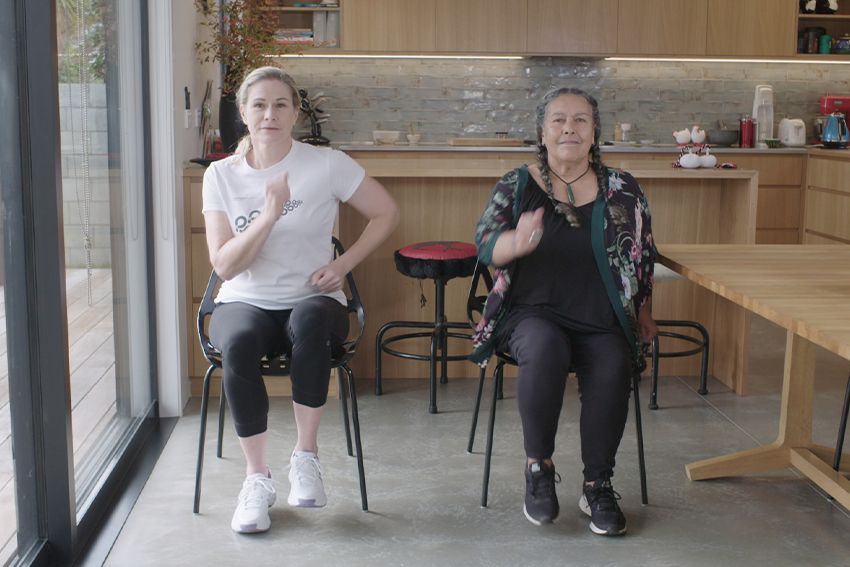Physio for older adults from a distance

AUT researchers have developed an exercise programme for housebound older adults, to prevent loss of mobility and independence during COVID-19.
The exercise programme will feature on the television show Healthy for Life, which debuts on TVNZ 1 on May 2 at 9.00am (and repeats on Saturdays). It will also be available at TVNZ OnDemand. The show is part of a new collaboration between TVNZ and partners across the health sector.
“Healthy for Life is an amazing feat of cooperation between academics and agencies that care for older New Zealanders. It’s part of a proactive approach to staying connected with older people in the community at a time when many are feeling most vulnerable and isolated,” says Liz Binns, AUT Senior Research Officer and President of Physiotherapy New Zealand.
The Super Seven Exercises were developed in tandem between Binns, who demonstrates the simple movements on camera, and Denise Taylor, Professor of Physiotherapy and Director of the Health and Rehabilitation Research Institute at AUT.
In New Zealand, more than 200,000 older adults receive home support services funded by district health boards. With the COVID-19 pandemic, DHBs were faced with the challenge of developing distance interventions, for services like physiotherapy and rehabilitation, to maintain the health of this population.
Associate Professor John Parsons at the University of Auckland, a Bupa Fellow in Allied Health Research which supports the advancement of care delivery for Waikato DHB, put out a call to the tightknit physiotherapy community.
The project started with ‘getting something on paper’ and grew from there.
Waikato DHB has delivered a print version of Super Seven Exercises to more than 2,000 homes, and work is underway on a te reo Māori adaptation.
Many partners have been involved, including ACC, Aged Concern, Regional Sports Trusts in Waikato and Canterbury, and television production company Tomorrowland.
“As researchers, we never imagined using mainstream television to deliver our exercise programme. It was never an option until now,” says Professor Taylor.
She had been developing neurological rehabilitation technology, with poor uptake in clinical practice.
“People are so accustomed to physiotherapy and rehabilitation being delivered in person, that’s what they expect. There was very little appetite for different mechanisms of delivery,” she recalls.
COVID-19 turned everything on its head. The global pandemic underlined persistent digital inequity and difficulty staying connected with older people in the community. More than 35 percent of people over-75 have no internet access. This time of quarantine has brought telehealth, broadcast programming and postal services into a new light.
“It’s an opportunity for us to fast track interventions we have been developing. A great deal of work has been done over the past decade and now people are interested. We are seeing attitudinal change among healthcare providers and funders,” says Professor Taylor.
As well as being hands on, physiotherapy involves education and self-management – helping clients optimise function, wellbeing, and independence.
Professor Taylor and others are looking to develop telerehabilitation services, namely, different ways to deliver contactless and low contact interventions to people when they leave hospital.
“In the response to COVID-19, people still need rehabilitation for a variety of health conditions. Symptoms such as fatigue and weakness are common across many conditions and require practical advice on how to manage them,” she says.